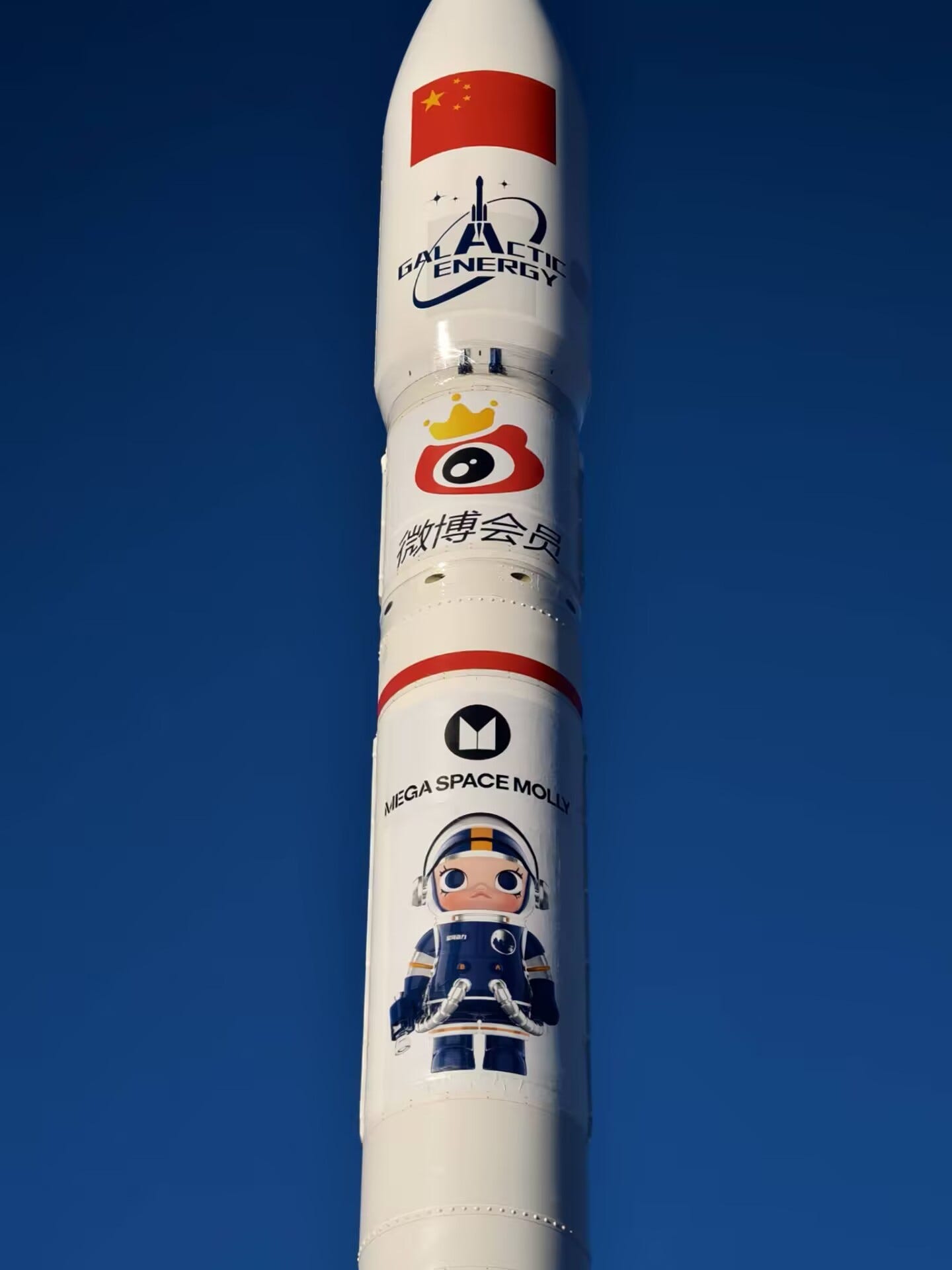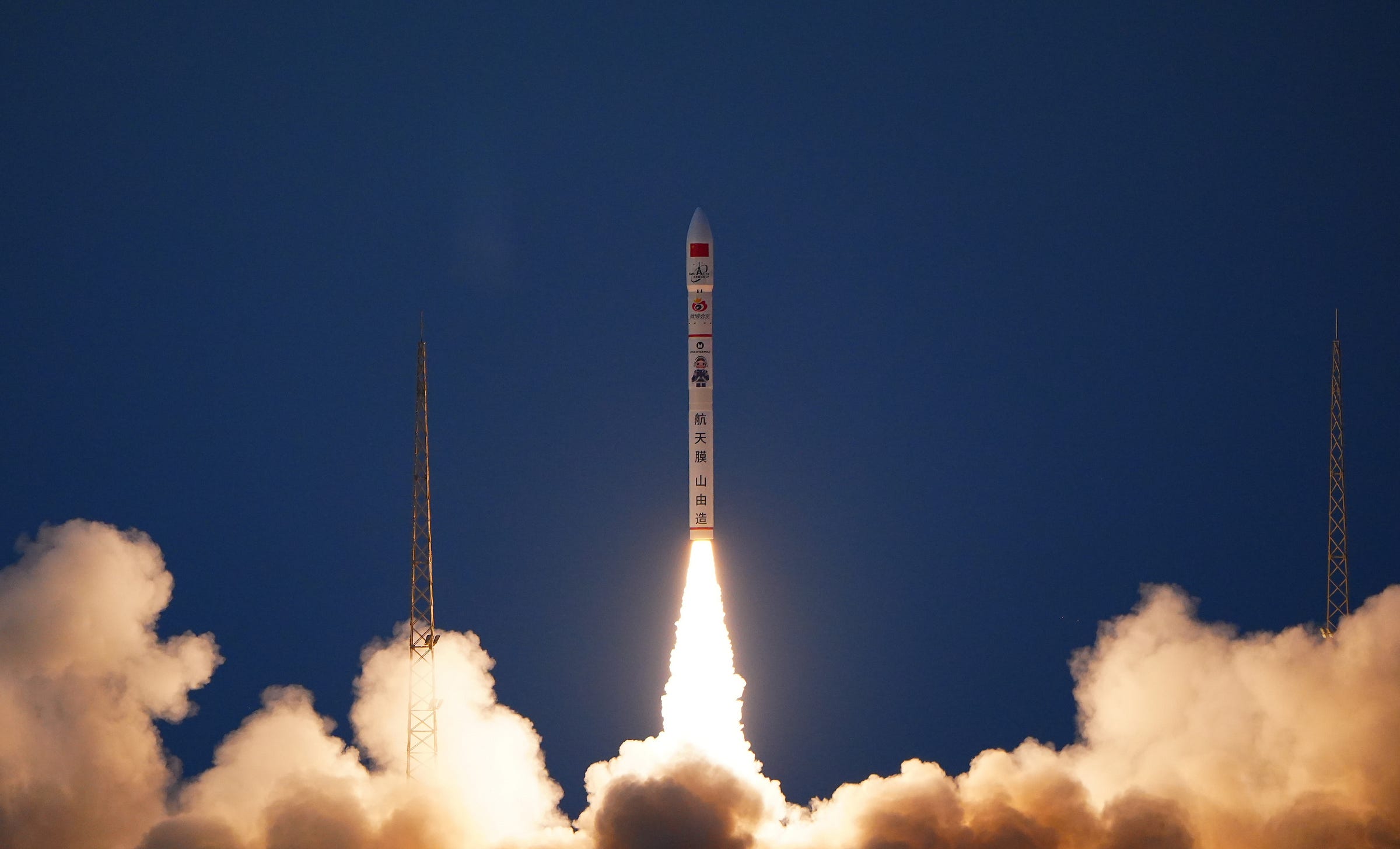Ceres-1 performs China's first private sector launch for 2025 [Ceres-1 Y16]
Galactic Energy's first launch of 2025 carried five satellites into orbit for two customers.
Galactic Energy has begun its 2025 launch campaign with the liftoff of Ceres-1 from the Jiuquan Satellite Launch Center at 18:11 pm China Standard Time, or 10:11 Universal Coordinated Time, heading to sun-synchronous orbit.
Riding atop of Ceres-1 to a 535-kilometer sun-synchronous orbit were five satellites, four Yunyao-1 (云遥一号) satellites and the Jitianxing-A-05 (吉天星A-05).
Jitianxing-A-05 is an optical remote-sensing satellite developed by Suzhou Jitian Xingzhou Space Technology Co Ltd (苏州吉天星舟空间技术有限公司) as part of a small optical remote sensing constellation. The Jitianxing-A constellation aims to provide imaging services for watershed management, pipeline monitoring, border control, ecological environment monitoring, agriculture planning, and forestry planning. Other services for the constellation include natural resource monitoring, transportation planning, finance and insurance imaging, smart city planning, as well as assisting in economic and social development policy.
The four Yunyao-1 satellites, numbered 37 through 40, are part of Yunyao Aerospace’s (云遥宇航) meteorology constellation, which aims to have ninety satellites in orbit. Each Yunyao-1 satellite has a global navigation satellite system radio occultation payload along with an infrared imager. Yunyao Aerospace plans to provide increasingly accurate weather services with its constellation, assisting in weather prediction, magnetic storm monitoring, earthquake forecasting, and ocean forecasting. Before today thirty-four Yunyao satellites were in orbit, bringing the constellation up to thirty-eight.

Two sponsors’ logos and artwork were flying on the side of Ceres-1 for today's mission. On the third-stage was the paid member logo for Weibo (微博), a microblogging website commonly called China’s equivalent to Twitter, while Pop Mart’s artwork of its MEGA SPACE MOLLY figure was on the second-stage and the launch mission patch. MEGA SPACE MOLLY is one of Pop Mart’s many collectibles, often sold in ‘blind boxes’.
In its post-launch blog post, Galactic Energy stated that the launch vehicle for this mission was the first to be produced by their new production base in Ziyang (资阳市), Sichuan Province (四川), while adding that three more Ceres-1 rockets had completed final assembly and testing at the site. The company also added that Ceres-1 has delivered sixty-three satellites into orbit across sixteen successful missions, becoming China’s most successful privately developed rocket.
Today’s launch was the 13th mission for Ceres-1, and the 17th launch for the Ceres-1 launch vehicle series (Ceres-1 and Ceres-1S). This was also the 4th launch from China in 2025.
Liftoff video via Cosmic Penguin, Wu Lei, and Chenchen Zhao on X (formerly Twitter).
Check out the previous Ceres-1 launch
What is Ceres-1/1S?
This section is for those less familiar with China's commercial launch vehicles.
Galactic Energy’s Ceres-1, and its sea launch version Ceres-1S, is a four-stage launch vehicle that burns solid fuel in the first three stages, and a storable propellant in the fourth-stage. The fourth-stage can also be replaced with the company’s Eros orbital test platform.
The payload capacity of the launch vehicle is currently as follows:
420 kilograms to low Earth orbit
300 kilograms to a 500-kilometer sun-synchronous orbit
270 kilograms to a 700-kilometer sun-synchronous orbit
The first-stage is powered by a solid rocket motor that burns an undisclosed solid propellant to produce 60 tons of thrust. The second-stage also burns an undisclosed solid propellant to produce 28 tons of thrust. The third-stage is the final solid rocket stage, once again burning an undisclosed solid propellant, producing 8.8 tons of thrust. The fourth-stage burns a storable liquid Monomethylhydrazine and mixed oxides of nitrogen fuel in an ‘attitude control thruster’ to generate 1 ton of thrust.
On the launchpad, Ceres-1 weighs 33,000 kilograms and stands 20 meters tall. The first, second, and third stage have a diameter of 1.4 meters while the fairing has a diameter of 1.6 meters.
So far Ceres-1 vehicles have flown from the Jiuquan Satellite Launch Center and various sea-based launch platforms.






